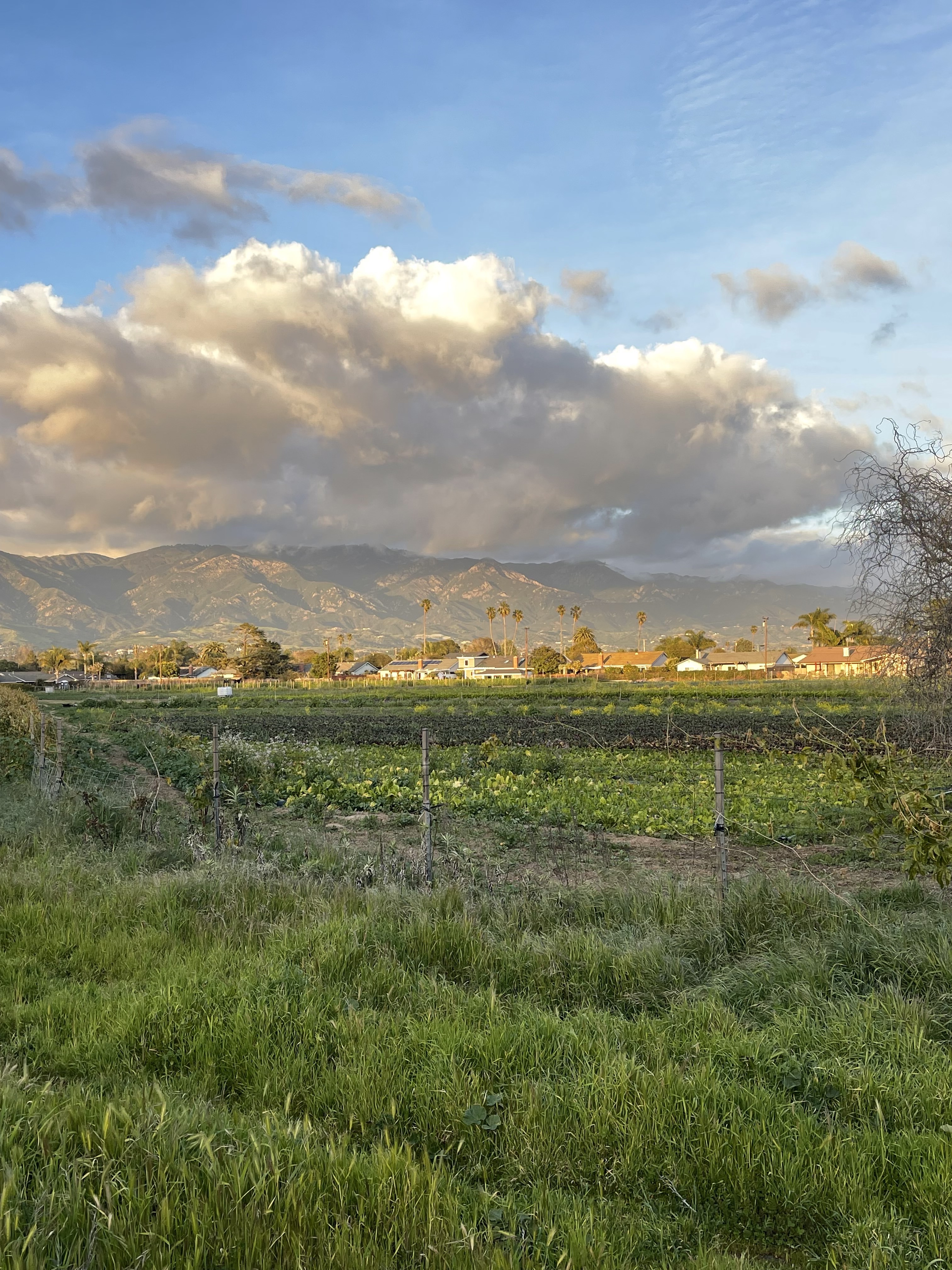Development Gone Wrong
More Than 4,000 High-Density Units in 1.5 Square Miles?

I’m writing this op-ed during Tsunami Preparedness week. And for anyone who attended or listened virtually to the recent developers’ proposals on March 19, 2024, at the County Board of Supervisors meeting, the evidence is clear that a tsunami of unfettered development is fast approaching.
On the table, currently, in just 1.5 square miles, are more than 4,000 high-density units. Much of the development will come at the expense of renowned agricultural land, a hallmark of the Eastern Goleta Valley. Most of these units are market rate units, well out of reach for most of the workforce. The time is now for our representatives to head for the higher ground, to stand up for the land and people they represent. They need to hold to their own words:
“It’s a plan I couldn’t support as it is now because I don’t believe it will solve our crisis. It places more than 3,000 new units (75 percent of the South Coast total) within a three-and-a-half-mile radius in the Eastern Goleta Valley, impacting water, traffic, and quality of life,” Supervisor Laura Capps wrote in an op-ed. The numbers she mentioned have since grown to more than 4,000 and in less space.
“I share the concerns that I’ve heard from so many in Goleta about the loss of agricultural lands. As we move forward, I remain resolute that our Housing Element must seek to balance three vital goals: mitigating impacts on the unique character of our neighborhoods, preserving and protecting our natural and agricultural resources, and avoiding state sanctions and penalties,” Supervisor Joan Hartmann stated.
The proposed projects must be scaled back and better distributed. And agricultural land must be preserved to protect our natural environment and community as a whole.
The Environmental Impact Report (EIR), available to read here, does an exhaustive job of showcasing the impact this scale of development will have on our social and environmental landscape. The project comparisons in Table 4-20 of the report emphasize that the impacts on aesthetics and visual resources, agricultural resources, air quality, biological resources, hydrology and water quality, noise, land use, utilities and water supply, wildfire, and transportation will be “significant.” The EIR makes it clear: These projects on agricultural land, in such a focused area, will “significantly” impact everyone’s quality of life for generations to come.
Paying no heed to the EIR, the developers flooded the room with mockups of high-density housing projects, raining the term “affordability” on the board. But most of the housing they peddled is at market rate.
The Balancing Act web tool (sbco.abalancingact.com) shows the various scenarios that the supervisors must consider to meet the Housing Element demands. Each one has unit development going well beyond the required units, because the affordable housing numbers will not be met without going well over the total units required. This is because the developers are not offering to build enough of the needed affordable housing in their projects. The developers are offering us deflated innertubes as the wave approaches.
Even with these thousands of high-density housing units, the demand for housing will be ceaseless. The thousands of people living in high density will need services, services that are not being addressed sufficiently in any of these board meetings. And workers will drive in to meet those service needs. And the argument can be made for their own local housing needs. So the cycle of over-development will continue until Santa Barbara County looks like the many other cities and counties of California with unlimited development: congested, underfunded, and still unaffordable.
Where is the line? When is development too much? Why are we considering re-zoning 15 percent more land than is required by the Regional Housing Needs Allocation?
Let’s talk about the higher ground. For starters, our agricultural land must be protected. At the very least, the projects must be reduced on that land. The EIR itself offered some alternatives, such as “Reduced Project A Alternative,” which “reduces adverse impacts to the proposed Project’s 16 resource areas. The EIR reads: “[W]hen taken together and compared against the other alternatives considered for analysis, the Reduced Project A Alternative makes the most sizeable reduction in physical environmental impacts, and, therefore, would be an environmentally superior alternative to the proposed Project.”
The EIR also notes that reduced projects will reduce impacts on “Prime Farmland, Unique Farmland, and Farmland of Statewide Importance.” But even Reduced Project A will result in more than 1.3 million square feet of commercial development, still a tsunami but slightly less devastating than the full onslaught of the 16 projects on the table. Reduced projects that are less concentrated in the Goleta Valley must be the consideration standard.
So, a tsunami is coming, and we must be prepared. Who will stand on the higher ground?
It is up to our supervisors and local neighbors. We must follow the path of least impact on our land and resources. Write letters. Attend meetings. Talk to your friends and neighbors. Ask questions.
The supervisors need to push back on the wave of building requirements from the state, requirements made curiously while our state population is in decline. The supervisors must not yield to the developers’ money grab, developers who have no interest in the actual well-being of our community. Stand the higher ground.
Generations before us have had to make their stand, and now it is our turn to carry on that legacy.
